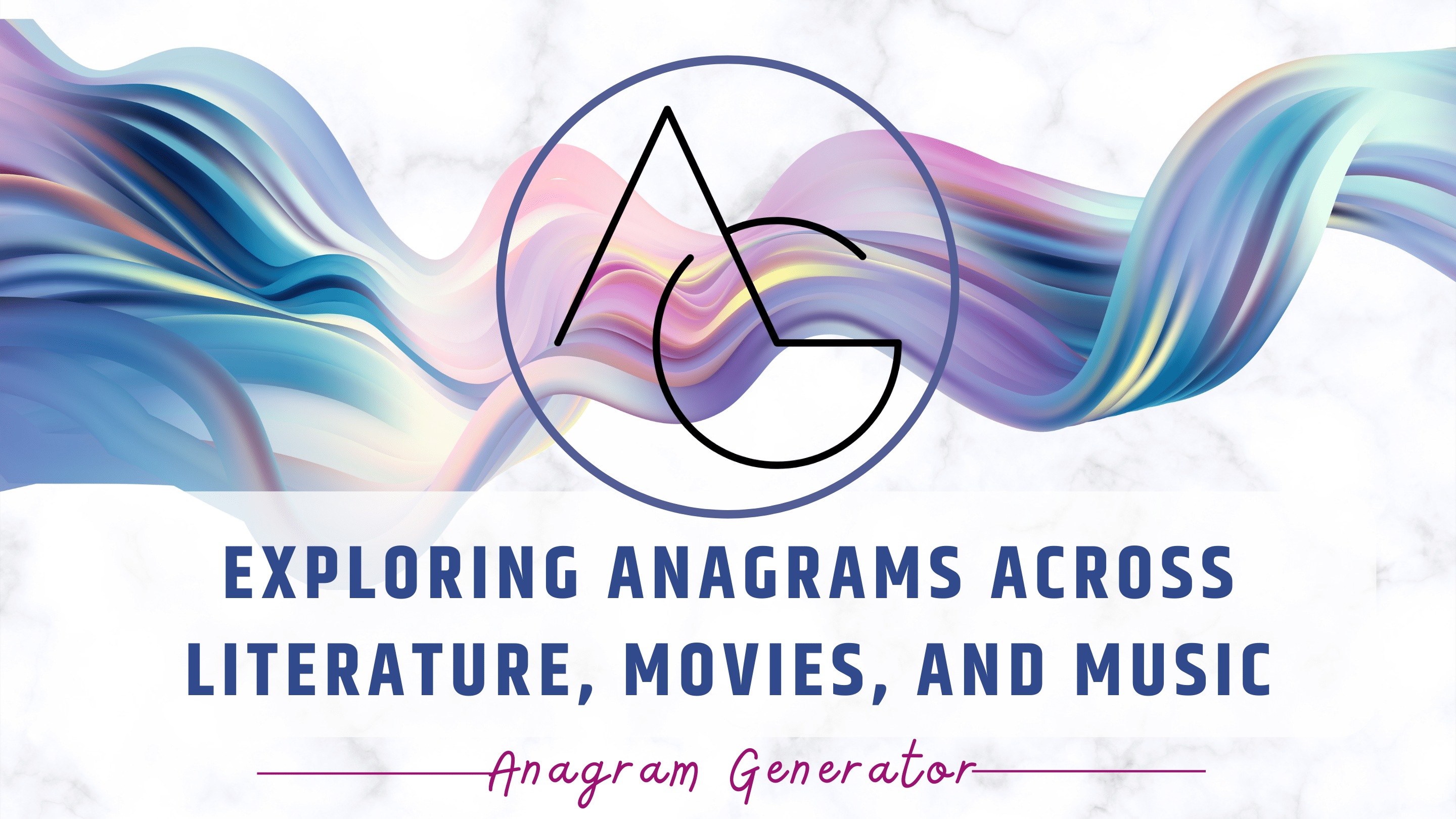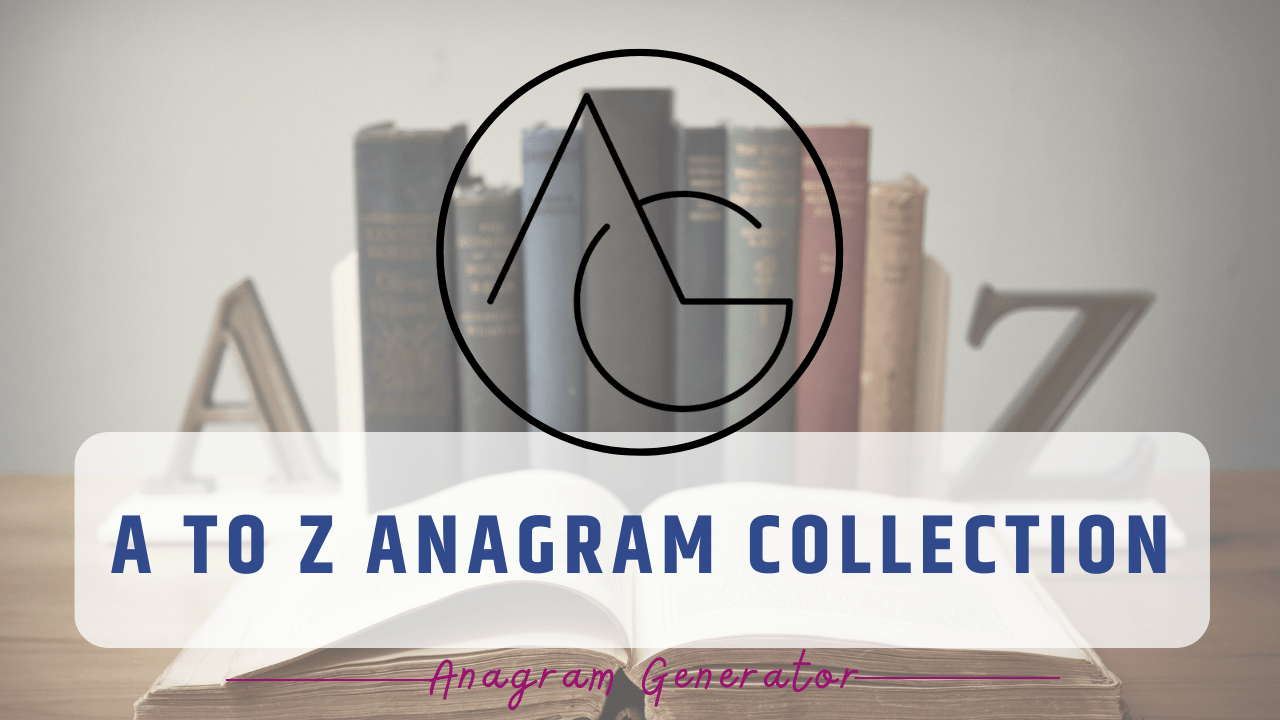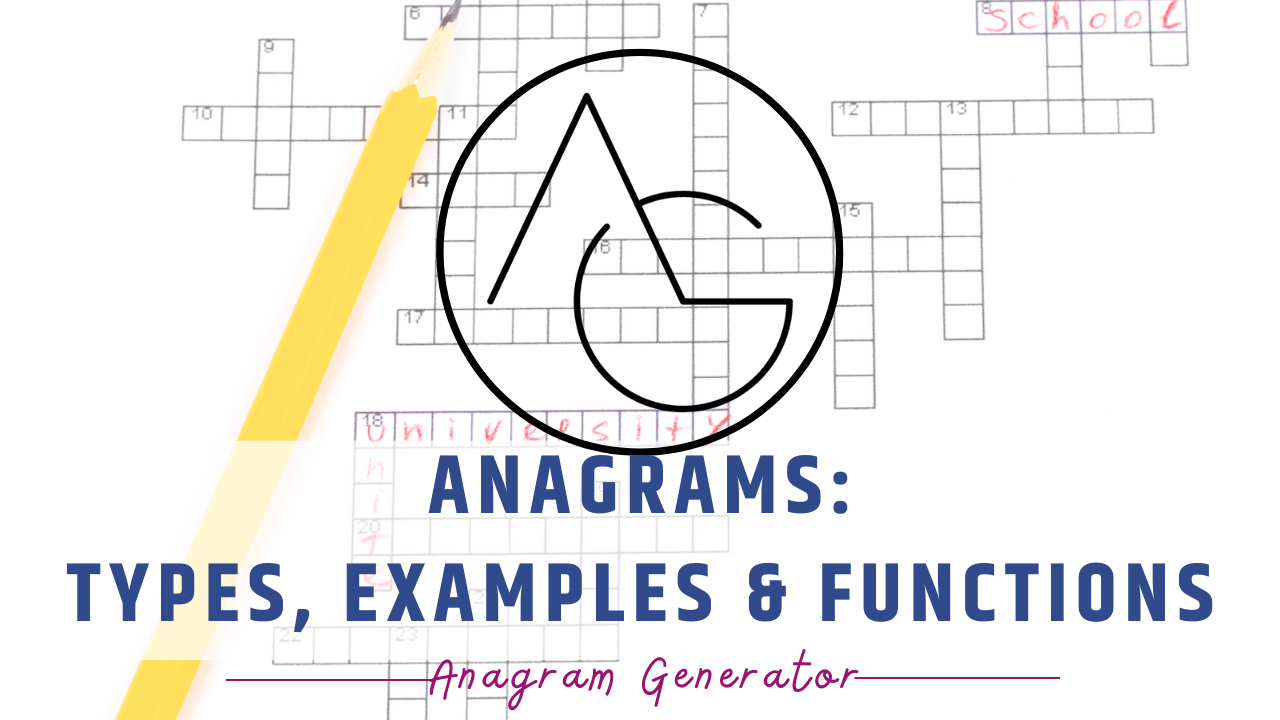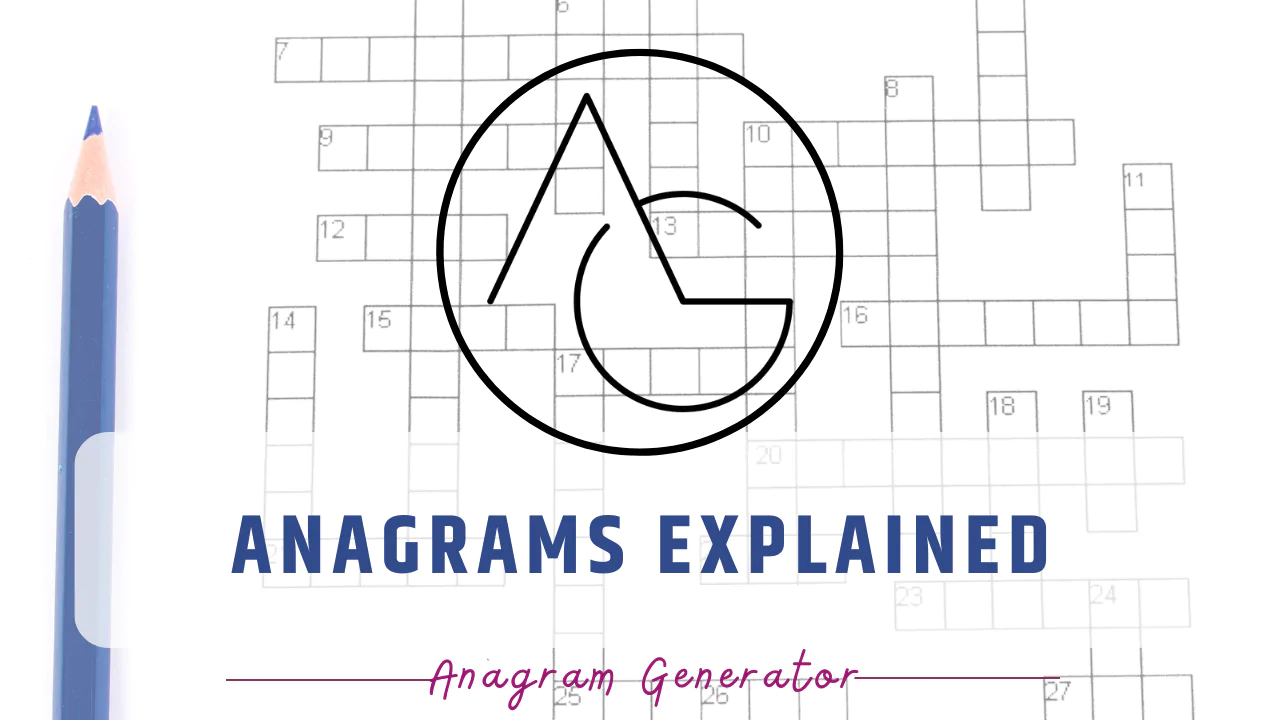Anagrams, rearrangements of the letters of a word or phrase to form a new word or phrase, have been used in literature, movies, and beyond for various purposes, including plot twists, puzzles, and hidden messages. Here are some examples:
Literature:
- Shakespeare’s Hidden Prince: William Shakespeare’s iconic play “Hamlet” is an anagram of “Amleth,” a legendary Danish prince from Norse mythology. This subtle hint might foreshadow the play’s themes of revenge and lineage.
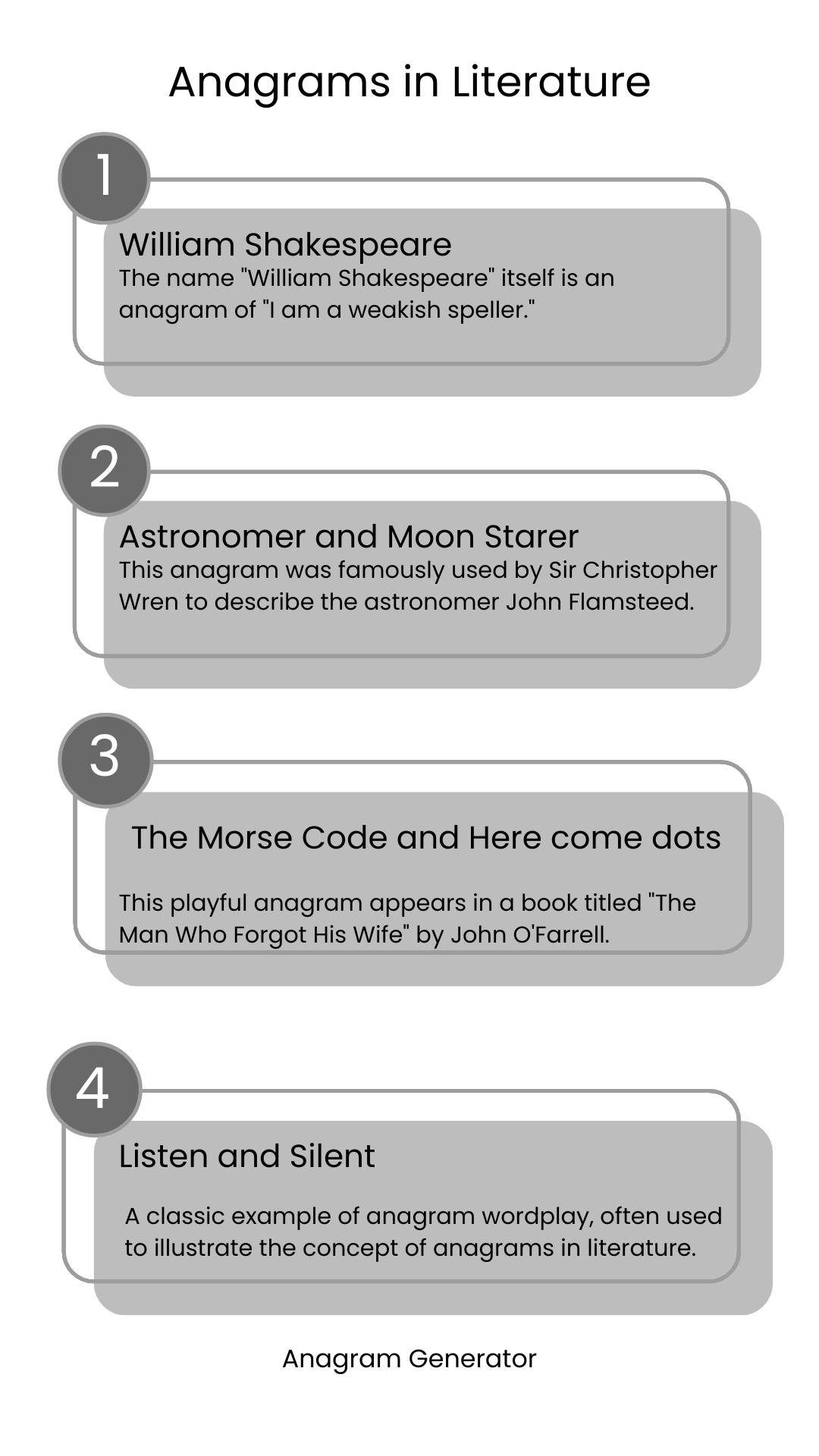
- J.K. Rowling’s Magical Clue: In the Harry Potter series, the seemingly disjointed name “Tom Marvolo Riddle” hides a chilling secret. When rearranged, it reveals the notorious villain’s true identity: “I am Lord Voldemort.”
- Jonathan Swift’s Hidden Lands: In “Gulliver’s Travels,” Swift cleverly disguises real-world locations through anagrams. The island of “Laputa” is an anagram for “Plate,” hinting at its floating nature, while “Tribnia” and “Langden” represent “Britain” and “England,” respectively.
- Tom Marvolo Riddle in J.K. Rowling’s Harry Potter and the Chamber of Secrets is an anagram of “I am Lord Voldemort.” This revelation adds depth to the character and serves as a pivotal plot point.
- The avid reader is an anagram of “Read, avid!” in Douglas Adams’ The Hitchhiker’s Guide to the Galaxy. This anagram appears in the scene where Arthur Dent discovers a message in the first letters of each chapter.
Movies:

- The Shining’s Chilling Revelation: In Stanley Kubrick’s “The Shining,” young Danny’s scribbled message “REDRUM” on the mirror appears nonsensical at first. However, when read backward, it spells out the horrifying truth: “MURDER.”
- The Da Vinci Code’s Secret Name: Dan Brown, in his novel “The Da Vinci Code,” created the character Leigh Teabing by anagramming the last names of authors Richard Leigh and Michael Baigent, who inspired his work.
Beyond Literature and Movies:
- Pen Names and Brand Identities: Authors often use anagrams as pen names, like A.A. Milne (Alan Alexander Milne) and O. Henry (William Sydney Porter). Additionally, companies sometimes employ anagrams for brand names, like the sports apparel brand “Fila” from “Filas,” the founder’s name.
- Puzzles and Games: Anagrams are a staple in word games and puzzles, testing vocabulary and creative thinking. They can be found in crosswords, online games, and even mobile apps.
- Silent and Listen are anagrams in the movie The Da Vinci Code. The significance of this anagram plays a key role in deciphering clues within the plot.
- In the movie L.A. Confidential, the character Sid Hudgens is an anagram of “His dungs”, hinting at the character’s sleazy nature.
Religion
- Evil is an anagram of “Live”, which can be interpreted in various religious contexts, such as the idea of overcoming evil with a life lived according to moral principles.
- Silent is an anagram of “Listen”, a concept often emphasized in religious teachings, suggesting the importance of quiet reflection and attentive listening to spiritual messages.
- Stable is an anagram of “Tablets”, which could allude to the stone tablets of the Ten Commandments in Judeo-Christian tradition, symbolizing divine laws and guidance.
- Angel is an anagram of “Glean”, which can evoke the idea of gathering wisdom or divine insights, akin to how angels are often portrayed as messengers of divine knowledge.
- Earth is an anagram of “Heart”, hinting at the sacredness of the Earth in many religious beliefs, as well as the idea of nurturing and caring for the planet as an expression of spiritual reverence.
Beyond:
- Eleven plus two can be rearranged to “Twelve plus one”, an anagram used in mathematical contexts to illustrate the commutative property of addition.
- Astronomer is an anagram of “Moon starer”, a phrase sometimes used to describe someone who studies celestial bodies, playing on the whimsical nature of language.
